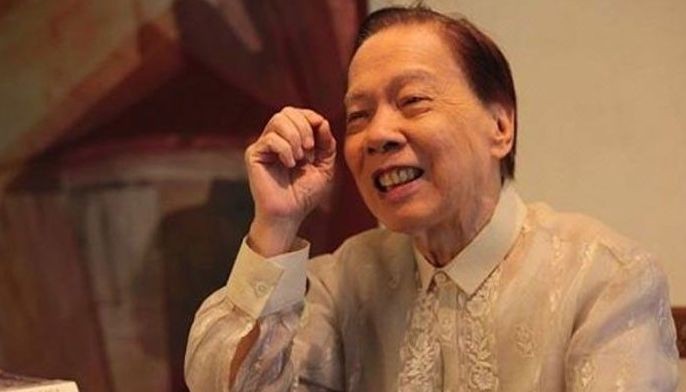Baguio Diplomat Hotel conservation: From ghost hunting ground to cultural hub
BAGUIO CITY, Philippines — It might look like its current reputation now as a favorite ghost hunting ground every Halloween but in five years' time, the former Diplomat Hotel is envisioned as a thriving cultural hub restored to its original look and feel as the retreat house of the Dominican priests in 1913.
Baguio City Mayor Benjamin Magalong and National Commission for Culture and the Arts (NCCA) Chairman Rene Escalante recently shared the planned conservation and rehabilitation of the three-hectare property located in Dominican Hill.
"Kasama po sa plan ng local government unit ng Baguio ay gawin itong cultural hub ng city dahil nga sa pagdeklara nito ng Unesco bilang isang creative city," the NCCA chairman said to a group of reporters during a recent site visit.
The city was formally named as part of the United Nations Educational, Scientific, and Cultural Organization’s (Unesco) Creative Cities of the world in February 2018. Baguio is part of the 64 cities from 44 countries that have been assigned the title.
"Sa mga darating na taon, ito po ay magiging sentro ng kultura ng Baguio, at tingnan natin, baka buong Cordillera region," Escalante added.
Multi-year rehabilitation, conservation plan
NCCA has allotted P15 million to fund the conservation management plan of the former Dominican retreat house.
The planning process will include a geodetical survey of the site to see its structural integrity and stability.
"Planning will take us about six months dahil magiging multi-year 'yan. 'Yung restoration siguro will take us about, hindi naman pwedeng one-time na funding, mga four to five years. It will take us five years pero by that time, on the third year, baka partially magamit na ito," Magalong said.
Currently, the former Dominican Retreat House or Diplomat Hotel appears as a ruin with some of its walls painted. A courtyard with a fountain still stands inside. A cross is erected on its rooftop, which provides a view of Baguio's skyline.
Back to its original form
The retreat house was designed by Fr. Roque Ruaño, the Spanish priest from the Dominican order who was also a civil engineer. He also designed the earthquake-proof main building of the University of Santo Tomas, which still stands today on its current campus in España, Manila.
The building has undergone many names and transformations since it was built in 1913. It was the Dominicans' retreat house until 1915. From 1915 to 1918, it operated as a school named Colegio del Santissimo Rosario. Many sought refuge in it during World War II. It also served as the Japanese Imperial Army's last front.
More than three decades later, it became known as the Diplomat Hotel from 1973 to 1987. Its ownership was turned over to the City of Baguio in 2005.
Magalong said that once they have ironed out their conservation management plan, they plan to present it to the Department of Budget and Management or Congress for funding of its actual rehabilitation.
He shared that because of the "Creative City" designation, they have hosted arts and culture events in the site in the past, including the Ibagiw Creative Festival. The festival showcases the works and performances of local artists and craftsmen that range from rituals, to sculptural pieces, traditional arts, and other various crafts.
Thriving cultural hub
He likened the project to cultural destinations in other countries where museums and heritage sites are housed in spaces or complexes that feature a commercial component.
"Tulad ng mga ibang cultural buildings sa US, mga museum, talagang merong mga ganon. May commercial component para naman makapag-generate ng adequate na revenue for the upkeep, for the maintenance. 'Di naman masisira 'yung facade," the mayor explained.
He anticipates tourists will flock to the rehabilitated building. This is the reason why they are considering putting up a parking building and a mini-restaurant within the property.
"Ang pinakamaganda ay nasa Heritage Map na namin ito. So ang next move namin is to really conserve it. Ire-restore natin, but at the same time, it will become an arts and culture hub ng siyudad ng Baguio. It will also generate revenue para walang problema pagdating sa sustainability," Magalong shared.
The mayor is confident that their plans will push through because he trusts the competence of his own government.
"Alam namin we will be able to succeed dahil kung anong funding nito, talagang mapupunta sa funding. Kasi dito sa Baguio, talagang good governance dito e. Bawal dito 'yung corruption. Bawal dito ang under the table arrangement. Kaya ako very, very confident ako na maayos namin itong lugar na ito," Magalong said.
RELATED: 12th Tam-Awan International Arts Festival highlights artists' rights, protection



















